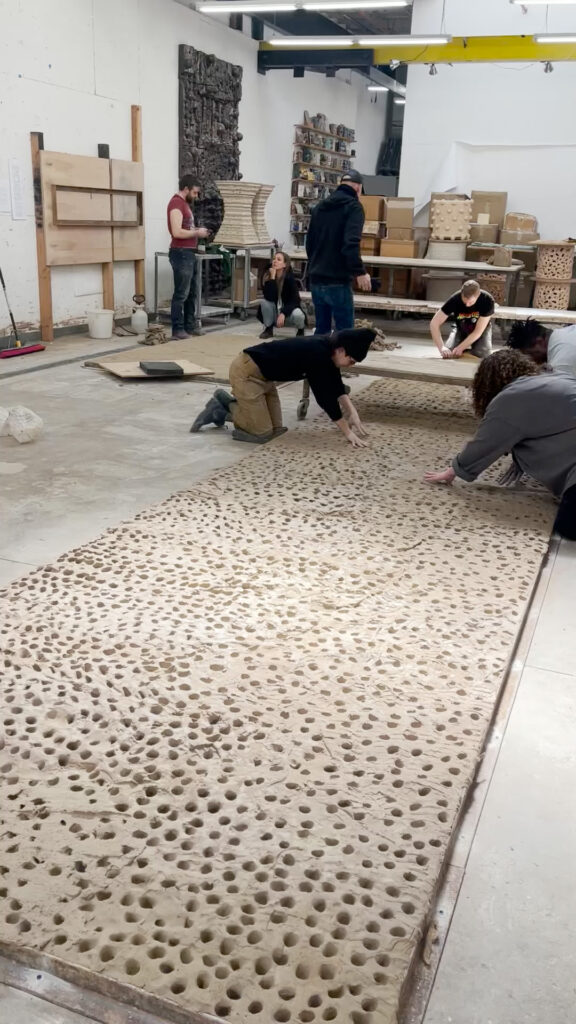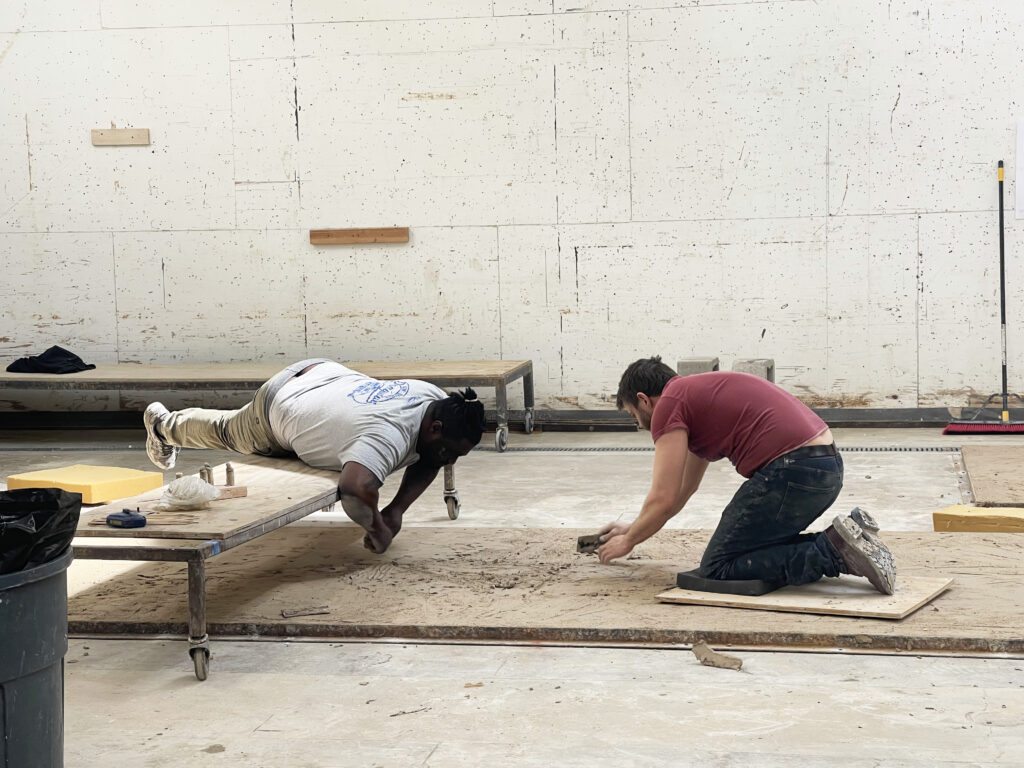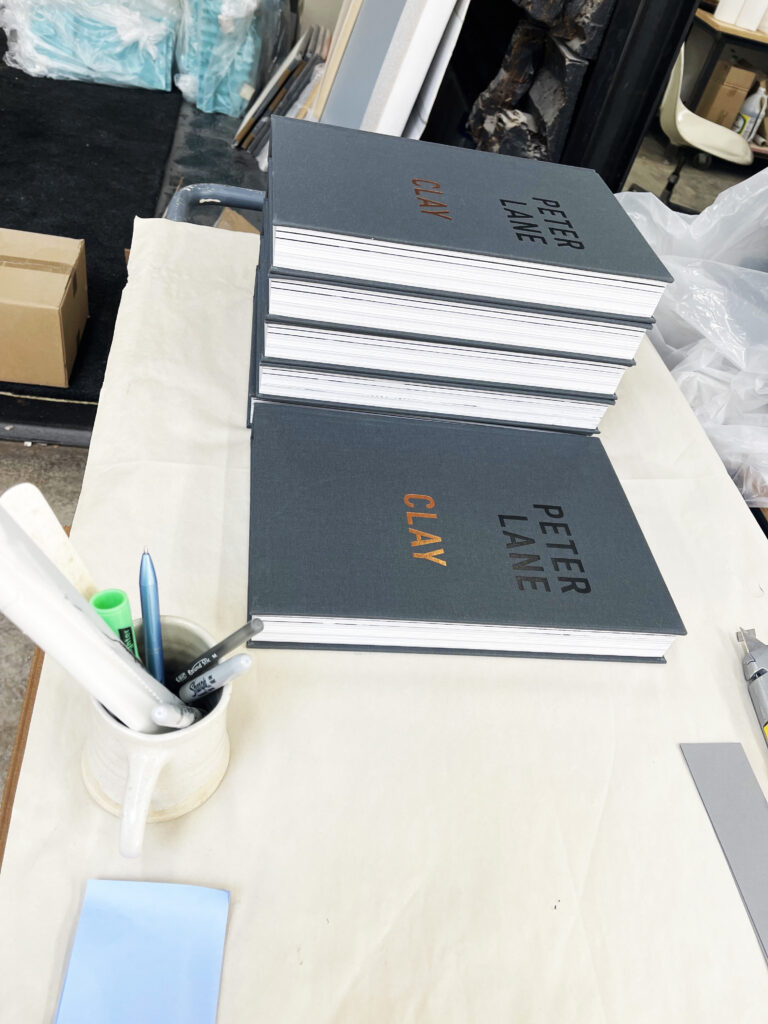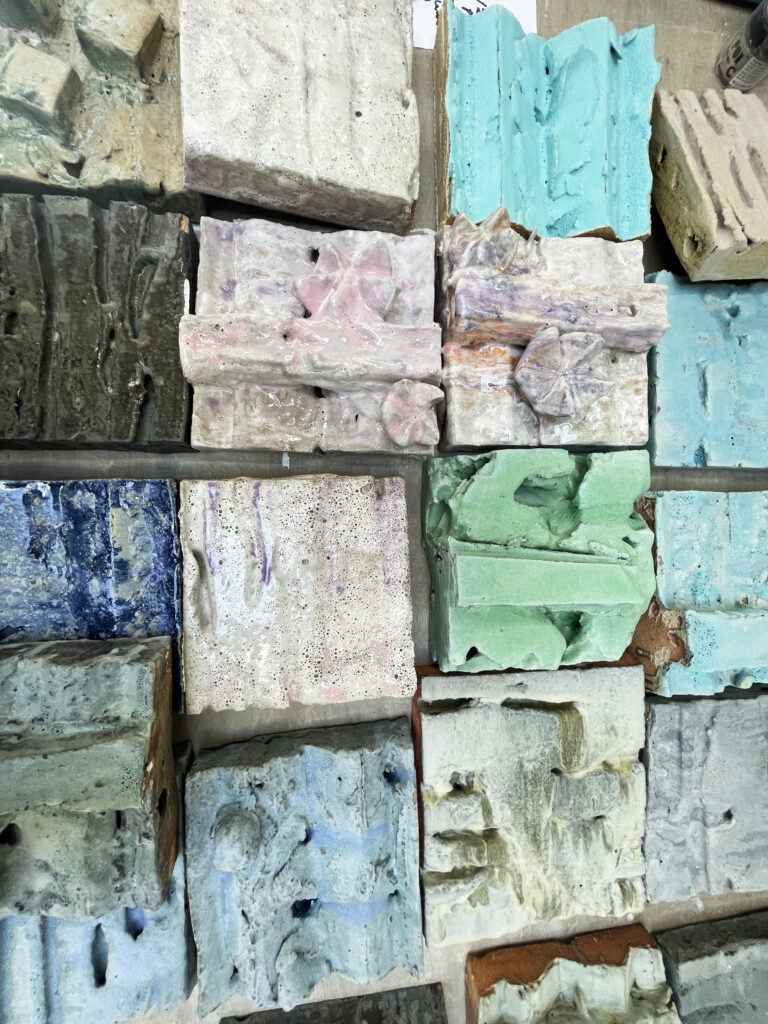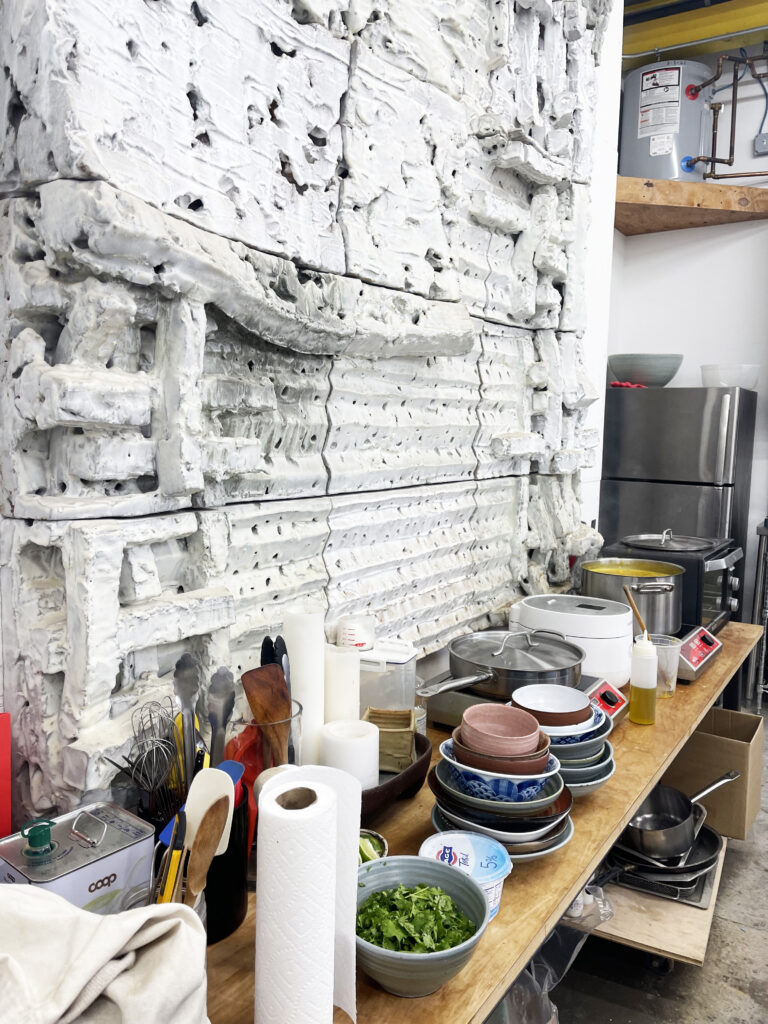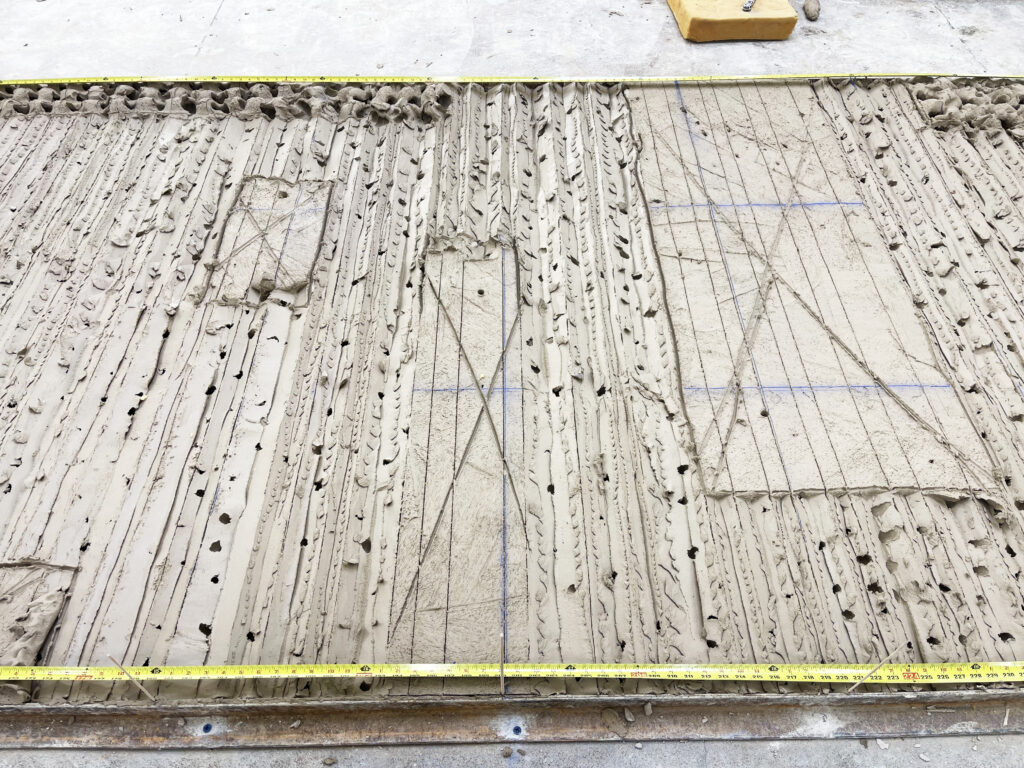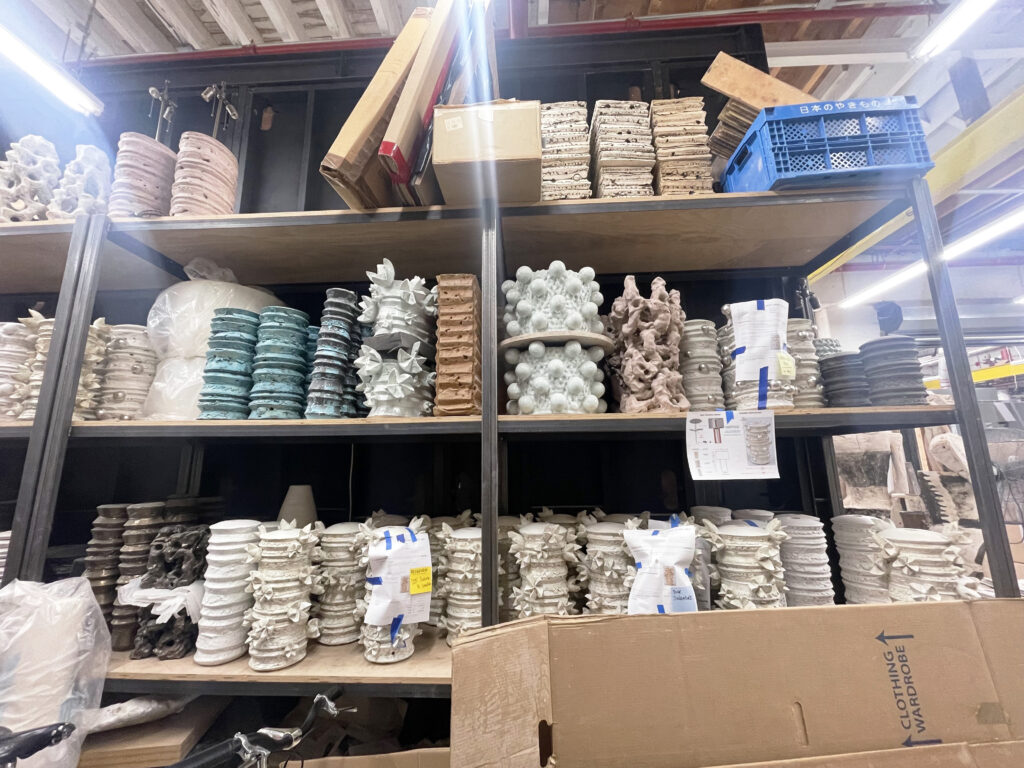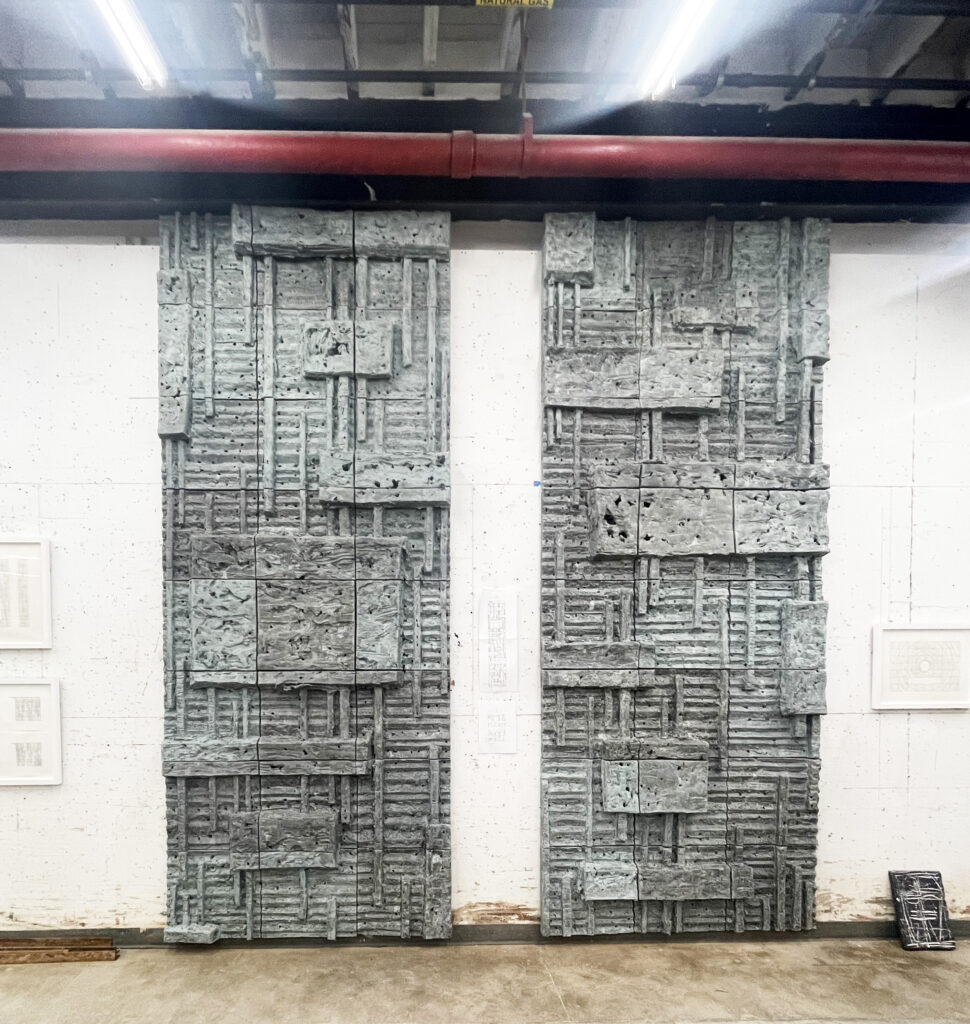Apply to the Summer 2024 Residency at Watershed Center for the Ceramic Arts

Watershed’s summer residency sessions offer artists uninterrupted time to focus on their practices in our state-of-the-art ceramics studio. During a session, up to sixteen artists form a creative community while living and working on campus. Participants enjoy 24-hour studio access, comfortable accommodations, and delicious meals. DEADLINE FOR THE SUMMER 2024 RESIDENCY IS FEBRUARY 1, 2024.

Enclosed by lush, densely rich Maine forests and the Sheepscot River lining the serene campus, the Watershed Center for the Ceramic Arts offers an idyllic escape from everyday busyness—an ideal haven for artists to focus on creating works and cultivating a stronger, more intimate creative relationship with themselves and others.
In Henry Miller’s Big Sur and the Oranges of Hieronymus Bosch, the author elaborates on the significance of quietude and departure from "the senseless grind which daily threatens to annihilate all incentive." Miller contends that 'the immature artist seldom thrives in idyllic surroundings," emphasizing that it's the "mature artist who feels the need to break with the clique surrounding [them]."
In this vein, Watershed epitomizes the ideal landscape for an artist to mature: The rural land by the coastline transports you into a tranquil realm sans distractions, and the campus is infused with an infectious energy of wild and imaginative exploration. Offering ample studio space, state-of-the-art facilities, networking opportunities, and non-hierarchical communal support, the residency forces artists—whether born in the early aughts or the previous century—to confront their creative selves, overcome blocks and boundaries, and contemplate their artistic intentions.
“It [has] been two weeks that passed like two hours. Pure bliss, a constant smile, and green views that seep deep into my bones. I am truly grateful for this gift I received. I feel like this time apart from my studio, from my family and friends, and my country […] gave me the opportunity to focus all my energy and my creativity only on clay!”
- Shay Gerassy, 2023 Resident
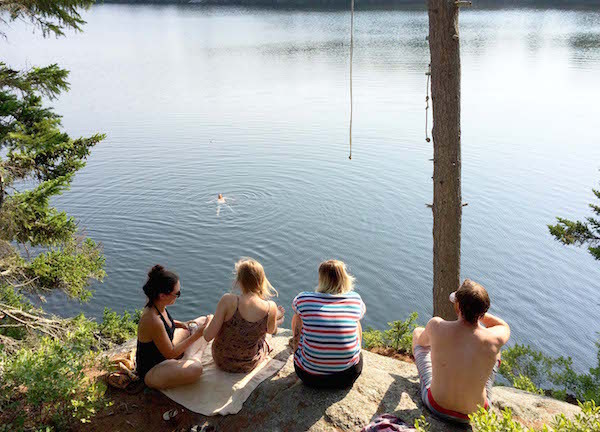
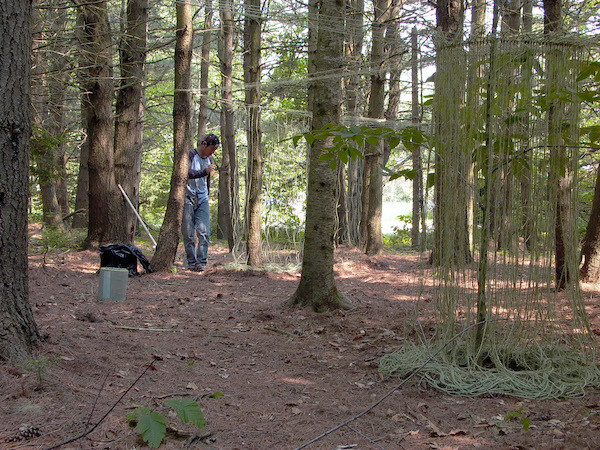

Watershed’s studio has recently undergone incredible renovations. The decrepit barn that once acted as the studio space has transformed into a modern and sophisticated 7,500-square-foot building. The Windgate Studio—lit by overhead LED and natural sunlight seeping through the rows of windows—is equipped with electric and kick wheels, a variety of standard ceramic equipment (e.g., slab-rollers, mixers, pug mill, wheels, extruder, and dry box); a large glaze room with ventilated workspace; a floor-to-ceiling spray booth; a dedicated plaster room; and a clay mixing space, galley kitchenette, and a seating area—the ceramicist’s dream studio.
The campus also offers firing facilities, including a wide range of electric, gas, and wood kilns, and a wood and metal shop available for use (permission required in advance). Residents enjoy 24-hour studio access, accommodating the artists’ creative flow and promoting art-making at any time of the day.
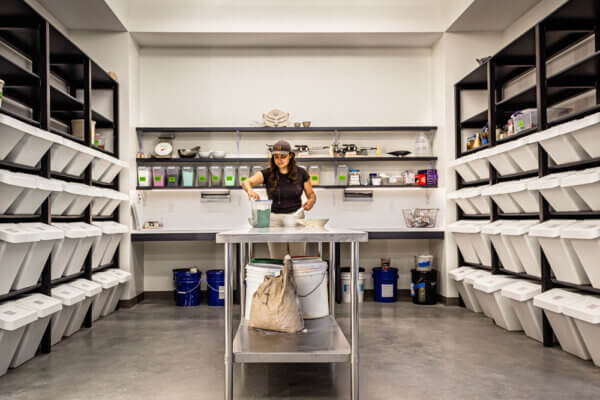


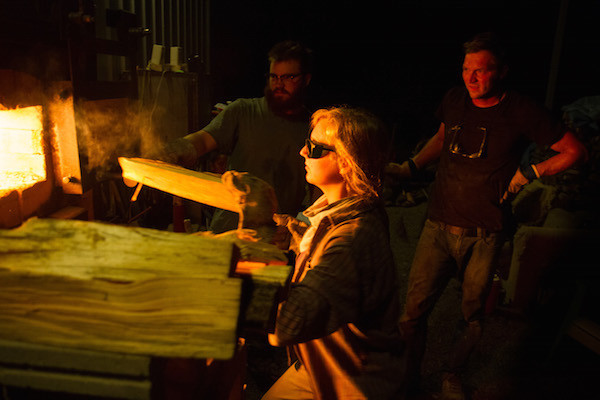
"I had never been with so many other ceramicists all at once! It was such a special experience to all have that in common. I loved that there was such an age range and we were all at different points in our ceramic careers/journeys. There wasn't ever any judgment of where we were at in our creative process or what we spent our time doing at the residency."
- Adriana Lemus, 2023 Resident
2024 SUMMER RESIDENCY: SESSION THEMES
Watershed’s unique self-directed residency program is divided into six two-week sessions, which are centered around a specific theme, directed by an organizer, and anchored by established artists. The sessions are designed to stimulate intellectual discussions and provide a safe space for artists to explore ideas, techniques, and processes, and build long-lasting friendships with participating residents. For more details about the sessions, click here.
Tasha Lewis, organizer of Session 2: Digital Clay, expresses her excitement about the opportunity to share research and learn from other artists. She describes the unique structure of the residency as the optimal space for exploration:
"[It] is so much deeper and messier than a conference presentation or Instagram story, and my hope for this particular residency is that every participant will have the opportunity to act as both a teacher and a student and benefit from the in-person co-mingling of our individual studio practices.
Also, I think even in the world of computer-aided ceramic design, there can be specializations that may not overlap. For example, some of the artists I am bringing together are experts in 3D printed clay and others in slip-casting digitally fabricated originals; collaborating across those areas of expertise is what most excites me about this opportunity."

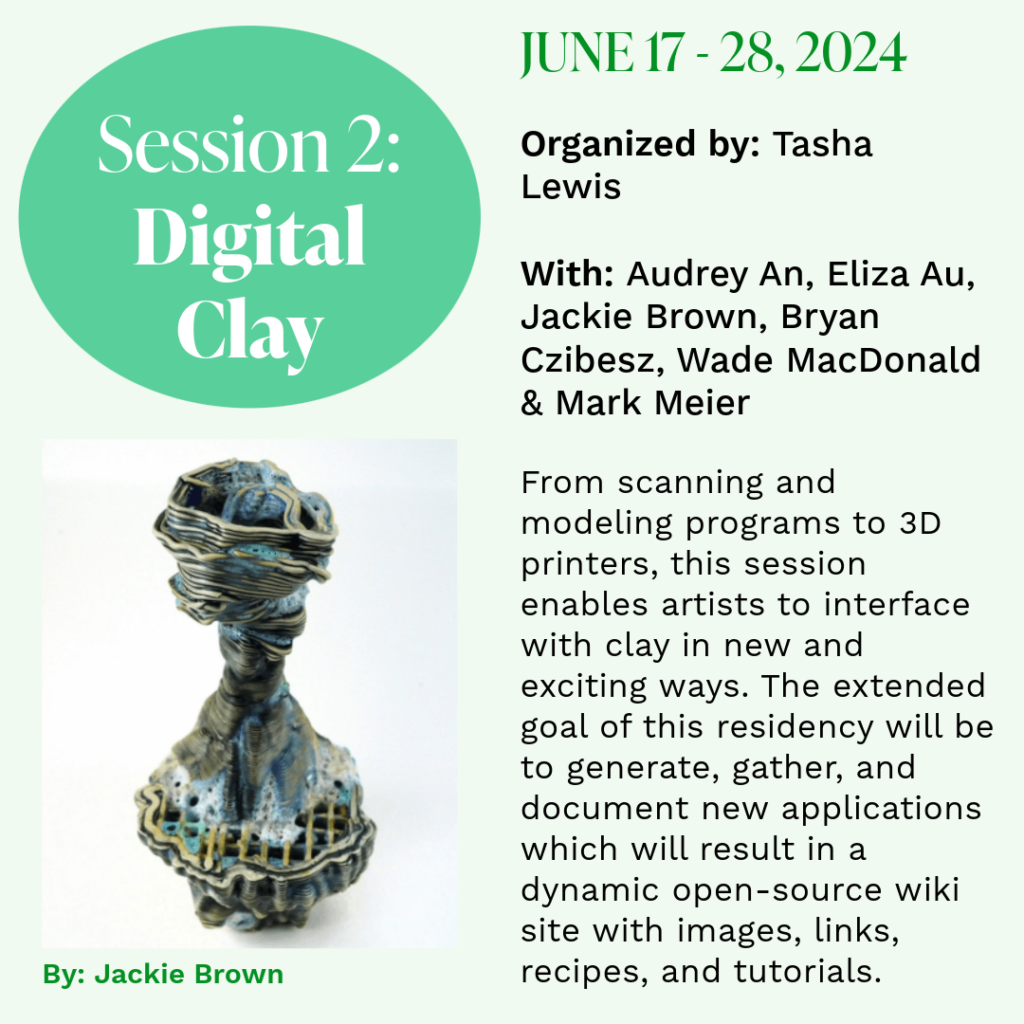
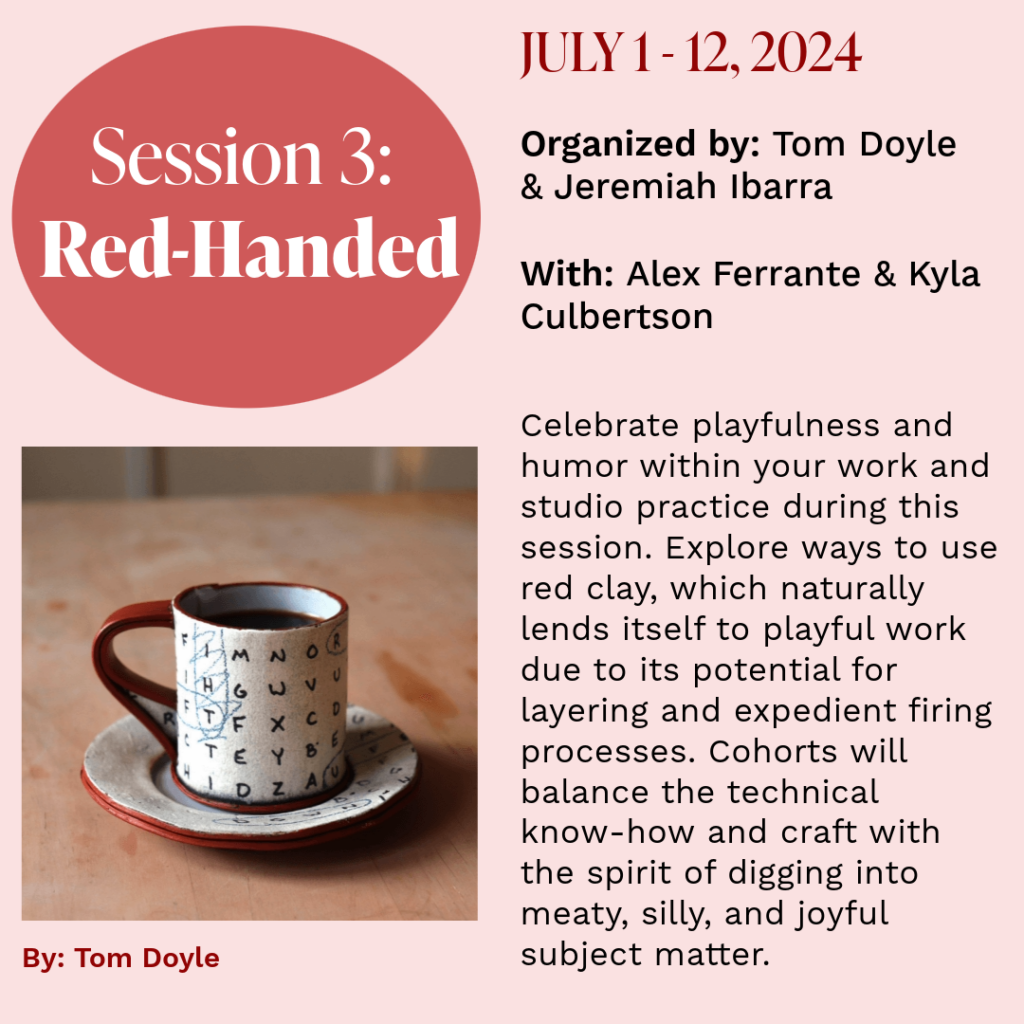


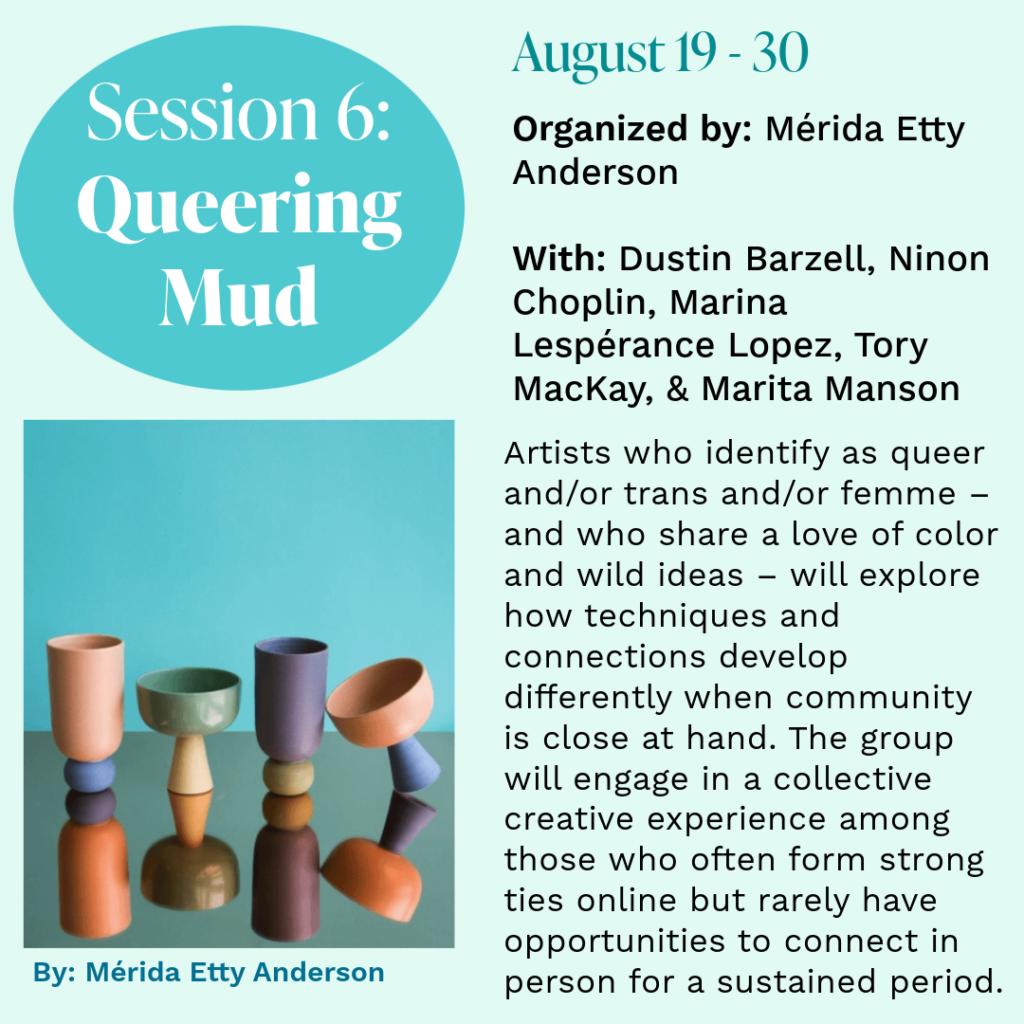
Trisha Kyner, the organizer of Session 4: Beautiful Community and resident alumni of Watershed, shares a similar sentiment to Lewis. She prioritizes sharing and communal support while navigating new models of mentorship, honoring history and memory with the common thread of accessibility, social practice, and community building:
"We want to take this time to make work, acknowledging that those of us who are artist/teachers or artist/community workers need time to focus on work and bounce ideas off others in the field. We are a multi-generational group that includes immigrants, indigenous, Black American, and first generation college voices. Throughout the session we will discuss the themes that animate our art and inspire our teaching. A common thread in many of our practices is polyvocality: the desire to communicate more than one thing, including multiple aspects of being and responsibility."


"The highlight of my experience was 100% the people. We had an incredible group of artists that really bonded quite quickly. I also got to tackle some ideas that have been filtering around in my brain that would have taken a bit of time to get to in my own studio practice."
- Katie Coughlin, 2023 Resident
Watershed is renowned not only for its state-of-the-art facilities and intellectually invigorating sessions but also for its meals, all meticulously prepared by the Watershed kitchen and sourced from local organic farms. Healthy, seasonal, and delicious meals are impeccably cooked and served to residents three times a day from Monday through Friday. On Saturdays, the kitchen is closed, and on Sundays, residents enjoy brunch and dinner.
For those with dietary restrictions, the Watershed kitchen can prepare vegetarian and gluten-free meals with advance notice.
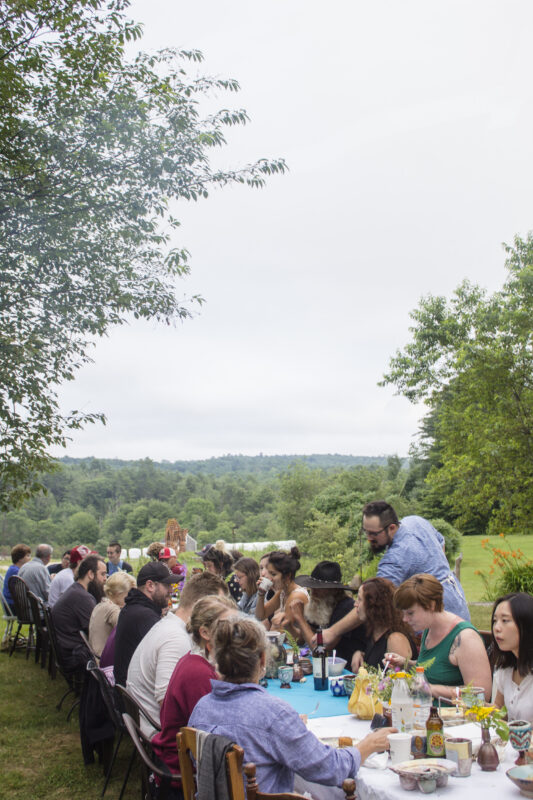
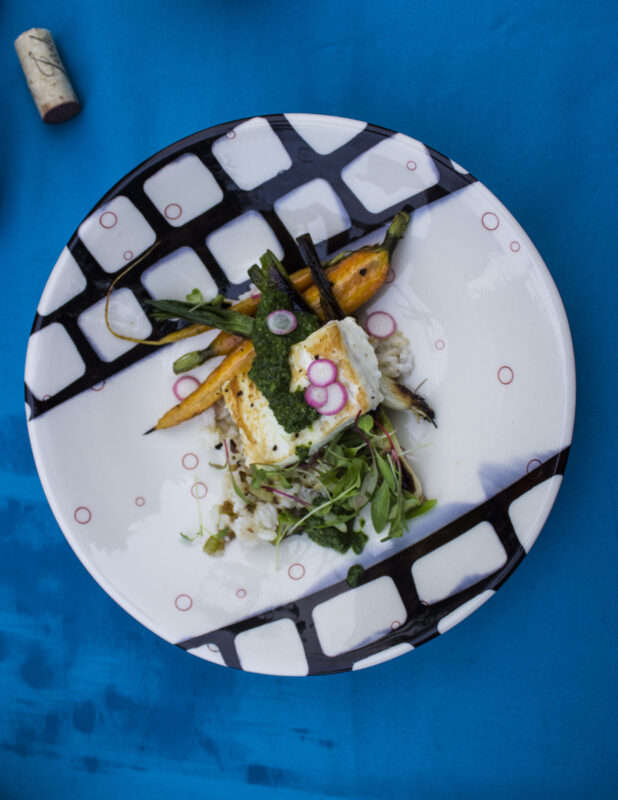
Various scholarships are available to subsidize Watershed’s residency fees (including room and board charges). All applicants are eligible to apply for the Kiln God Awards, and full scholarships are specifically available for artists of color, international and multi-cultural artists, underrepresented populations in the ceramic field, artists whose work addresses political, social, cultural, or environmental issues, and emerging artists. Watershed also provides a work exchange opportunity. Click here for more information about residency fees and scholarships.
Judith Schwartz, the President of MoCA/NY, past President of Watershed, and the honoree of the 2021 Watershed Legend Award, made it her mission to provide scholarships at Watershed: one award that supports artists whose work is unconventional and another to support diversity and international exchange.
"I am proud to be associated with this special environment where creativity, experimentation, and love for clay abounds and is collectively shared."
- Judith S. Schwartz
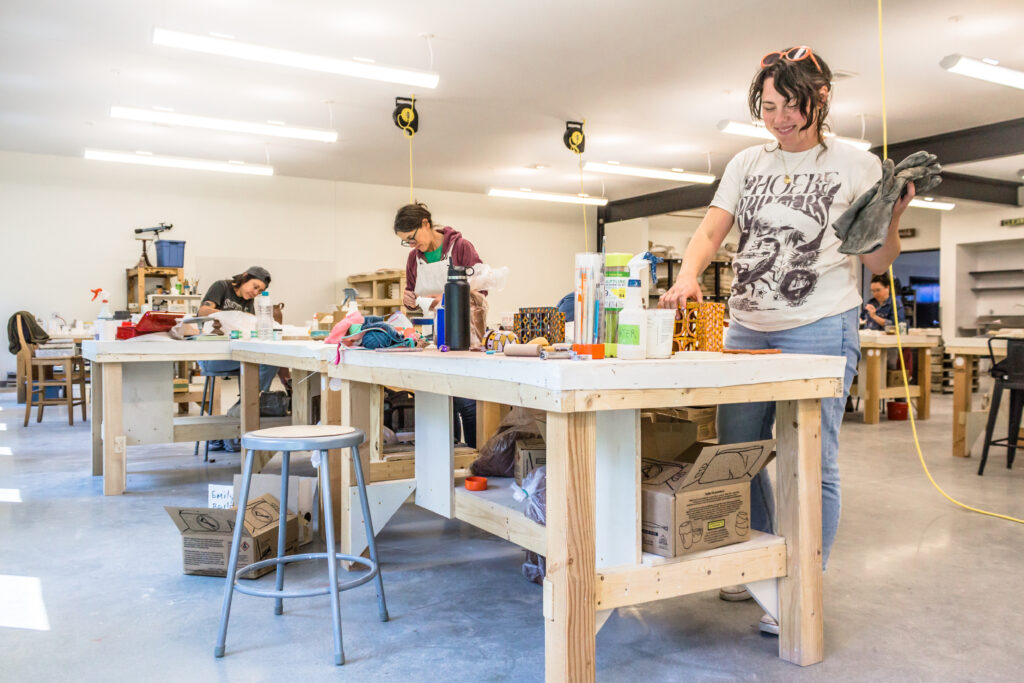
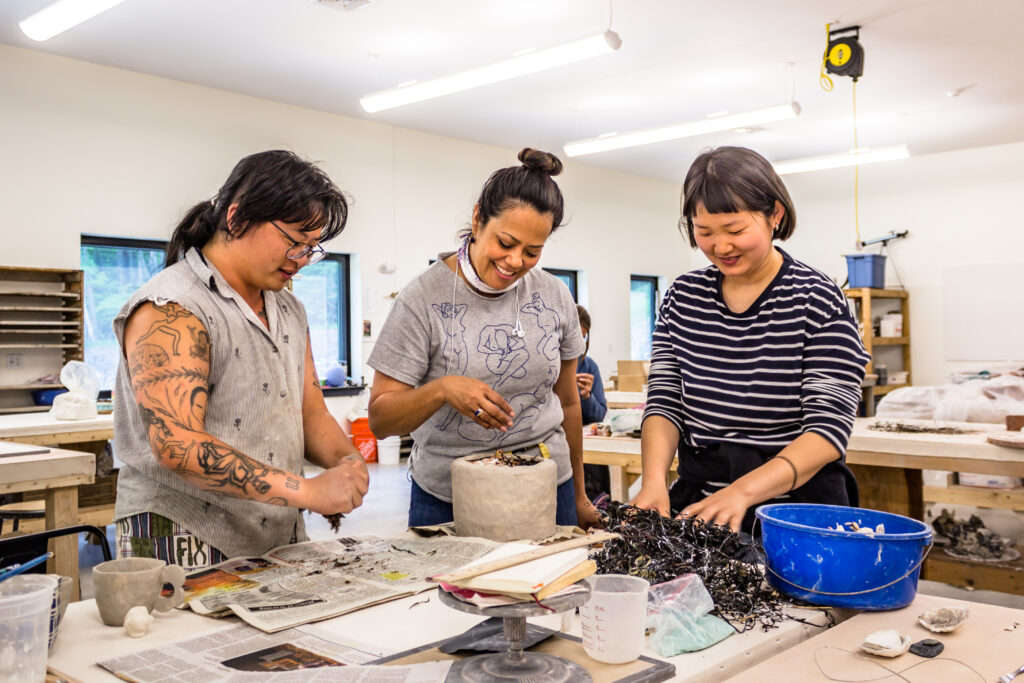

Watershed Center for the Ceramic Arts 103 Cochran Road, Edgecomb, ME 04556 For more information about Watershed's 2024 Summer Residency, click here.
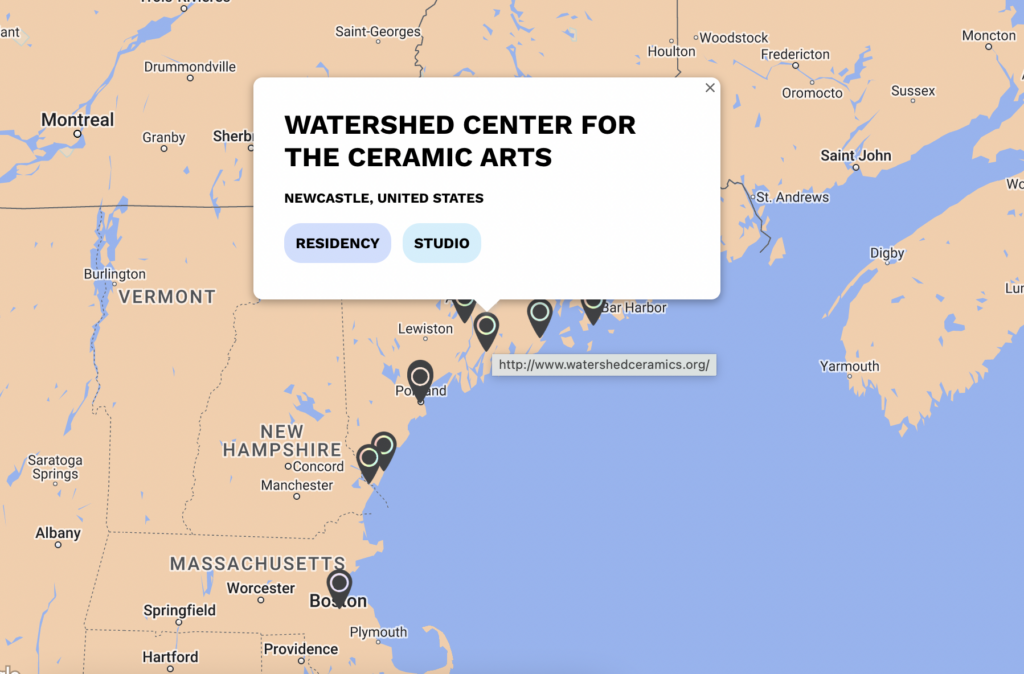
See Watershed Center for the Ceramic Arts and other ceramic destinations in Maine on our Ceramic World Destinations Map!
